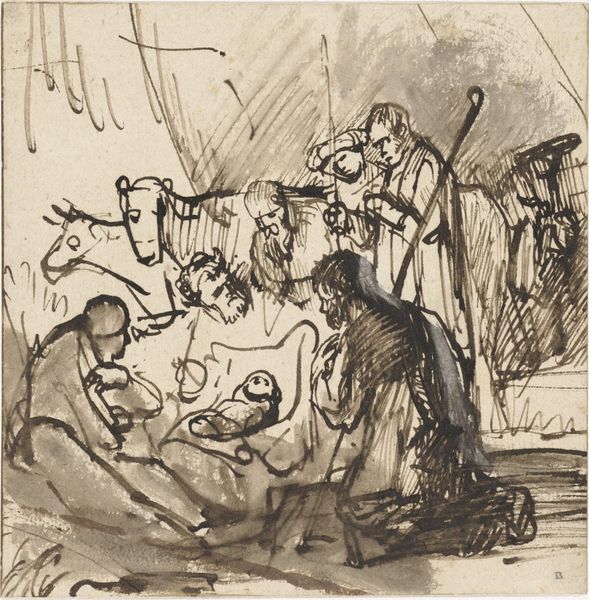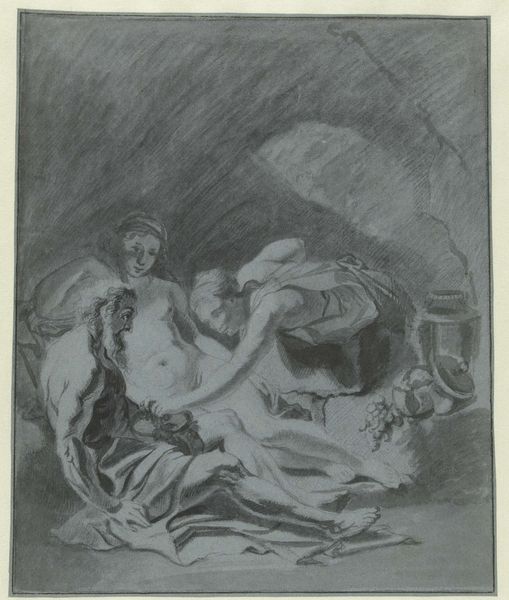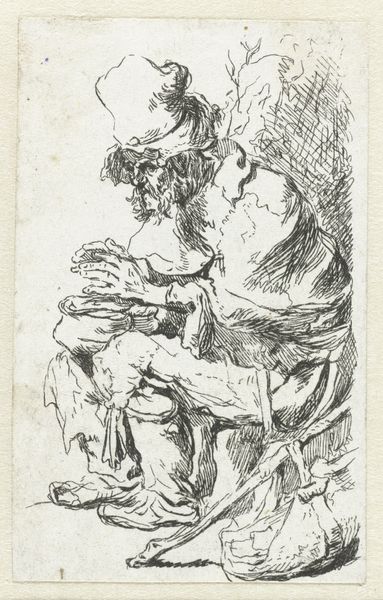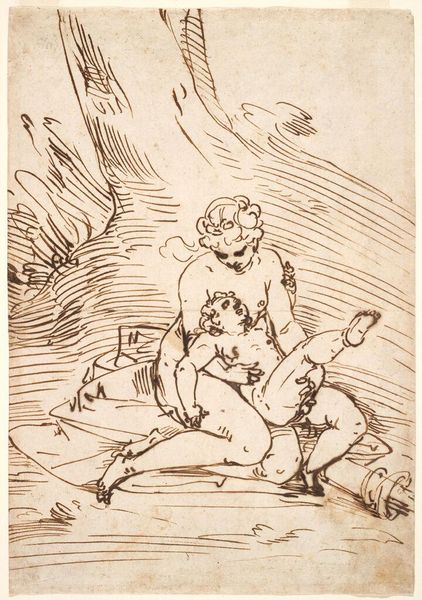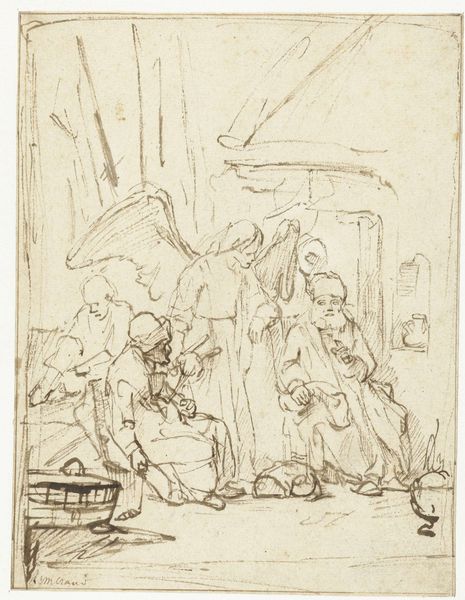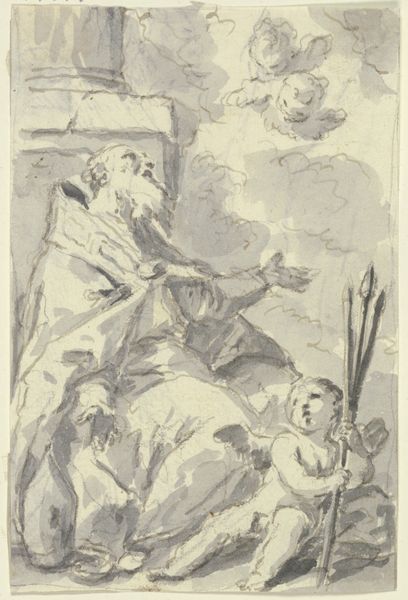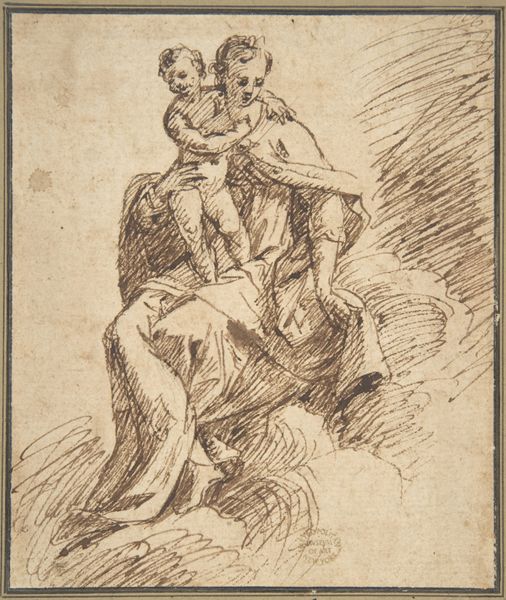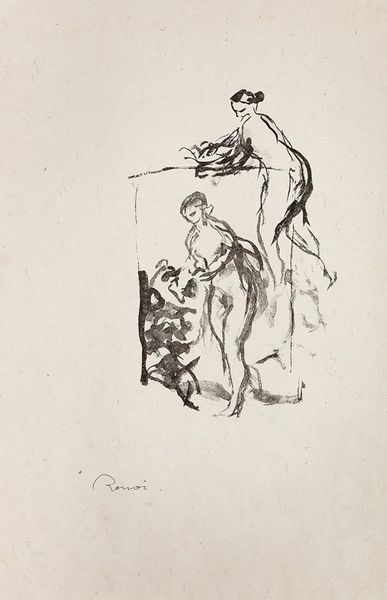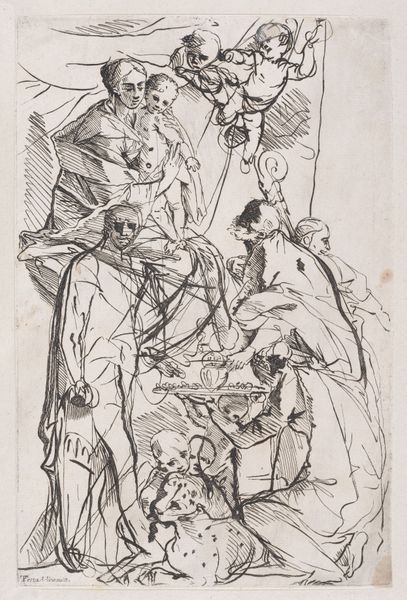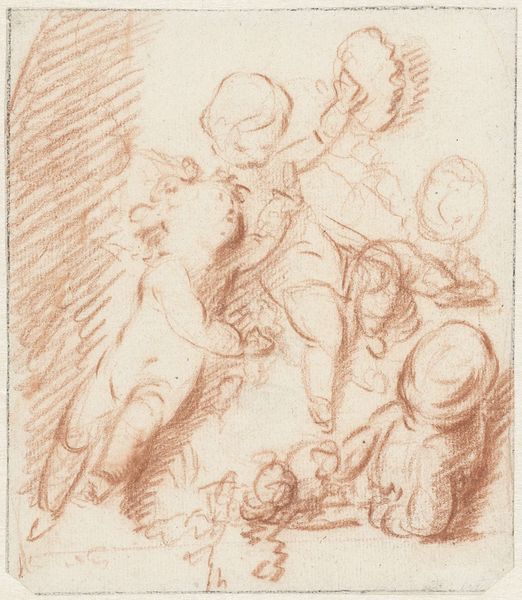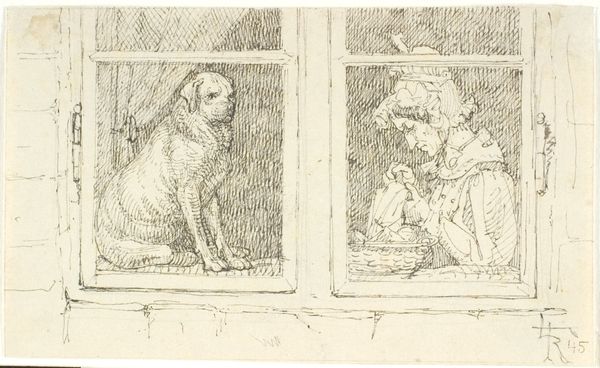
drawing, ink
#
portrait
#
drawing
#
ink drawing
#
baroque
#
ink painting
#
pen sketch
#
figuration
#
ink
#
genre-painting
Copyright: Public Domain: Artvee
Abraham Bloemaert produced this wash drawing titled "Caritas Romana" in the Netherlands, sometime between 1580 and 1651. The image depicts a classical tale of self-sacrifice, where a daughter secretly breastfeeds her imprisoned father, saving him from starvation. In the 17th century Dutch Republic, images of "Caritas Romana" circulated as emblems of filial piety, and were connected to wider debates about social welfare. This becomes clear when we consider that this was a time when traditional forms of charity through the church were being challenged by new civic institutions, like orphanages and poorhouses. Artists like Bloemaert turned to classical sources to find examples of virtuous behavior that could act as models for social reform. By studying such works, alongside archival records and pamphlets from the period, we can learn about the shifting boundaries between the family, the state, and the individual in early modern Europe.
Comments
No comments
Be the first to comment and join the conversation on the ultimate creative platform.

